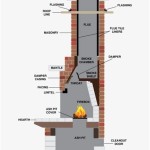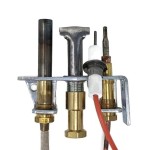Fireplace Shelf Mantels: Functionality and Style
Fireplace shelf mantels serve as a focal point within a room, offering both functional space and aesthetic enhancement. They are horizontal shelves typically installed above a fireplace opening, providing a surface for displaying decorative items, photographs, and seasonal accents. The integration of a fireplace shelf mantel can significantly alter the character of a space, ranging from rustic charm to modern sophistication.
The selection of a fireplace shelf mantel requires careful consideration of several factors, including the style of the fireplace, the overall décor of the room, and the practical needs of the homeowner. Material choice, dimensions, and installation methods all play a crucial role in achieving a cohesive and visually appealing result. Furthermore, understanding building codes and safety regulations pertaining to fireplace construction is paramount to ensure proper and safe installation.
Different styles of fireplace shelf mantels cater to a diverse range of aesthetic preferences. Traditional mantels often feature ornate carvings, intricate detailing, and classic profiles. These designs evoke a sense of history and elegance, complementing period homes and formal living spaces. In contrast, contemporary mantels tend to be sleeker and more minimalist in design, characterized by clean lines, simple shapes, and a focus on functionality. These mantels often incorporate materials such as metal, glass, or concrete, reflecting a modern aesthetic.
Beyond aesthetics, the functional aspects of a fireplace shelf mantel are equally important. The depth of the mantel determines the amount of surface area available for display purposes, while the height above the firebox impacts safety and heat resistance. Properly installed mantels can also serve as a protective barrier, preventing damage to walls and surrounding materials from heat exposure. The selection of a suitable mantel should therefore involve a thorough assessment of both its visual appeal and its practical capabilities.
Material Selection for Fireplace Shelf Mantels
The choice of material for a fireplace shelf mantel significantly influences its appearance, durability, and heat resistance. Common materials include wood, stone, brick, concrete, and metal, each offering unique characteristics and advantages. Wood mantels, particularly those crafted from hardwoods like oak, maple, or walnut, provide a warm and inviting aesthetic. However, wood is susceptible to heat damage and requires proper sealing and insulation to prevent warping, cracking, or combustion. The type of wood, the finish applied to it, and its proximity to the firebox all determine its overall safety and longevity. Reclaimed wood mantels are also gaining popularity, adding a rustic and eco-friendly element to the fireplace design.
Stone mantels, such as those made from granite, marble, or limestone, offer exceptional durability and heat resistance. Stone is a non-combustible material that can withstand high temperatures without degradation. Stone mantels often feature natural variations in color and texture, adding a unique and sophisticated touch to the fireplace. The weight of stone mantels requires careful consideration during installation, often necessitating additional structural support. Brick mantels offer a traditional and rustic aesthetic, often complementing existing brick fireplaces. Brick is also highly heat resistant and durable, making it a suitable choice for fireplaces. However, brick mantels can be more challenging to install and may require specialized masonry skills.
Concrete mantels provide a modern and industrial aesthetic, characterized by their clean lines and minimalist design. Concrete is a versatile material that can be molded into various shapes and sizes, allowing for customized mantel designs. Concrete mantels are also highly durable and heat resistant, making them a practical and stylish choice. Metal mantels, often made from steel, iron, or aluminum, offer a sleek and contemporary look. Metal mantels are typically powder-coated or painted to prevent rusting and provide a durable finish. Metal is a non-combustible material that can withstand high temperatures, making it a safe and reliable choice for fireplace mantels.
The selection of material for a fireplace shelf mantel should also consider the overall architectural style of the room. A rustic cabin-style home might benefit from a reclaimed wood or stone mantel, while a modern loft apartment might be better suited for a concrete or metal mantel. The chosen material should complement the existing décor and enhance the overall aesthetic of the space.
Dimensions and Placement Considerations
The dimensions and placement of a fireplace shelf mantel are crucial factors in ensuring both safety and visual appeal. The height of the mantel above the firebox must comply with building codes and safety regulations to prevent overheating and potential fire hazards. Generally, a minimum clearance of 12 inches is recommended between the top of the firebox opening and the bottom of the mantel. However, the exact clearance may vary depending on the type of fireplace, the fuel source (wood, gas, or electric), and the specific building codes in your area. Consulting with a qualified professional is essential to ensure compliance with all applicable regulations.
The depth of the mantel should also be carefully considered. A deeper mantel provides more surface area for displaying decorative items, but it may also protrude further into the room, potentially obstructing traffic flow. A shallower mantel offers a more minimalist aesthetic and minimizes encroachment on the room's space. The ideal depth of the mantel depends on the size of the room, the style of the fireplace, and the homeowner's personal preferences.
The width of the mantel should be proportionate to the width of the fireplace opening and the overall size of the fireplace surround. A mantel that is too narrow may appear visually unbalanced, while a mantel that is too wide may overwhelm the fireplace. The mantel should also be centered above the fireplace opening to create a sense of symmetry and visual harmony.
The placement of the mantel should also consider the surrounding architectural features of the room. The mantel should be aligned with other horizontal elements, such as window frames, door frames, or crown molding, to create a cohesive and unified design. The mantel should also be positioned to maximize its visibility from different vantage points within the room. The height of the mantel should be comfortable for viewing and accessing items displayed on the shelf.
Installation Techniques and Safety Precautions
The proper installation of a fireplace shelf mantel is essential for ensuring its safety and stability. The installation method will vary depending on the type of mantel, the material of the fireplace surround, and the structural integrity of the wall. Wood mantels are typically attached to the wall using screws or bolts, while stone mantels may require specialized anchoring systems to support their weight. Before beginning the installation process, it is crucial to consult with a qualified professional to determine the appropriate installation method and ensure compliance with all applicable building codes.
When installing a wood mantel, it is essential to use fire-resistant sealants and insulation to protect the wood from heat damage. The space between the mantel and the fireplace surround should be properly insulated to prevent heat transfer and potential fire hazards. Metal mantels may require grounding to prevent electrical shocks. During installation, it is crucial to wear appropriate safety gear, including gloves, safety glasses, and a dust mask. Use power tools with caution and follow all manufacturer's instructions.
Before installing a mantel, it is essential to inspect the wall for any signs of structural damage or weakness. If the wall is damaged, it may need to be repaired or reinforced before the mantel can be safely installed. The wall should also be clean and free of any debris that could interfere with the installation process. Use a level to ensure that the mantel is installed straight and level. A crooked mantel can be visually distracting and may also compromise its stability.
After the mantel is installed, it is important to periodically inspect it for any signs of damage or wear. Check for cracks, warping, or loose fasteners. If any problems are detected, they should be addressed promptly to prevent further damage and ensure the safety of the fireplace. Regular cleaning and maintenance will also help to prolong the life of the mantel and keep it looking its best.
Homeowners should always prioritize safety when dealing with fireplaces. Installing smoke detectors and carbon monoxide detectors is an essential safety measure. Furthermore, it is important to have the fireplace inspected and cleaned annually by a qualified professional to ensure that it is operating safely and efficiently. Proper maintenance and responsible use of the fireplace are crucial for preventing fires and ensuring the safety of the home.

Collection Of Premium Wood Fireplace Mantels Dogberry

Fireplace Mantel Shelves Floating Mantels Direct

Large Wood Beam Mantle Shelf 78 84 Floating Fireplace Mantel

Country Living 72 In W X 5 H 9 D White Wash Pine Hollow Farmhouse Fireplace Mantel The Mantels Department At Com

Fireplace Mantel Shelves Floating Mantels Direct

Steel Fireplace Mantel Shelf You Can Customize To Preference

Mantels And Fireplace Surrounds Built By The Wood Works Williamstown

Barnwood Fireplace Mantel The Collection

Vail Wood Mantel Shelf Fireplace Shelves Floating Mantelsdirect Remodel Prefab

Modern Floating Mantel Shelf Industrial Mantle Contemporary








